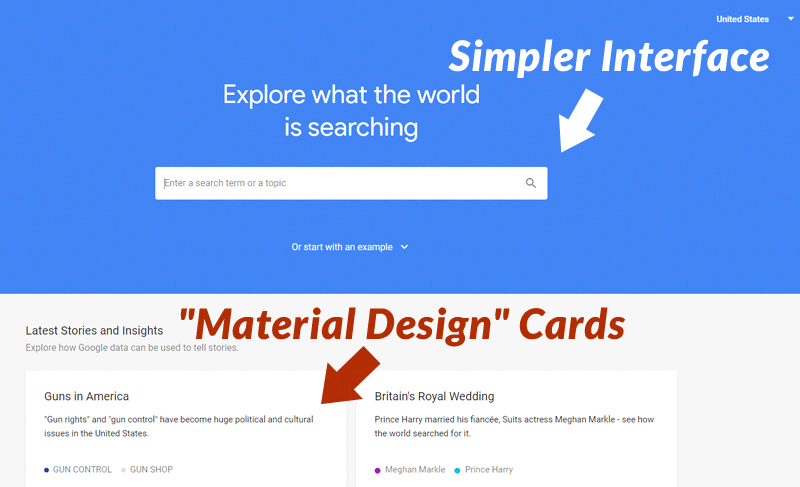With the month of May in the rearview, there are all kinds of things to look ahead to: The summer season is aaalmost here, with the official first day coming in the second half of the month. Yes friends, it’s finally time for BBQs, cold drinks and a trip to the local beach (or lakefront, in the case of my Chicago friends).
The end of May also marks another key milestone that marketers should be aware of: The official deadline for the EU’s General Data Protection Regulation.
Just in case you’re wondering whether or not this new standard will impact you, we’re here to tell you…
It absolutely does.
How Does GDPR Affect Marketing in the United States?
That’s right, GDPR officially went into effect on May 25th, and while the standard is focused on citizens in the European Union, it impacts organizations across the globe. Here are a few things to be aware of in the wake of this important standard taking hold:
- You need consent for email marketing lists. Legally, businesses must now get consent in order to add individuals to their mailing lists, and organizations may only gather and use the information they really need. In other words, you can ask current and potential customers for their email addresses, but not their demographic details. While this really only extends to EU citizens, it’s just good practice all around.
- You must be transparent about data use: An important article within GDPR – the standard actually encompasses 99 articles in total – includes the Right to Access, which requires a high level of transparency. Companies must be able to show all the personal info the business has on an EU citizen if they request it, and they have to explain how they use it, including (and especially) for marketing purposes.
Overall, GDPR revolves around data privacy and ensures that organizations are held responsible for the storage and use of sensitive, personal information.
See What The World Is Searching For With The Updated Google Trends
Because no CM Weekly is complete without a Google update, let’s take a look at the new face of Google Trends. Google recently added a slew of features including new ways to leverage data and explore news stories, as well as a more streamlined navigation and user interface.
As Search Engine Journal points out in this handy screenshot, the interface has been reworked to more closely resemble the Material Design framework:

The update also includes:
- A redesigned Trending searches section, which now shows real-time, (literally) up-to-the-minute trending stories, as well as daily trending stories.
- A new section that provides access to News Lab curated stories.
- Access to historical search data through 2001.
- Support for new types of infographics, including intensity maps.
Check out Google’s announcement to learn more.
Google: Site Changes Can Take Months To Be Reflected in Search Results
We’ve all been there: You make an important change to your website, one that’s sure to drive traffic, support searchability and impress your visitors. You check search results soon afterwards to find that *gasp* nothing at all has changed. Or, worse still, you see a loss in traffic.
Well, fear not. Before you go on a full-blown Michael Scott-level freak out, there’s something you should know: Google recently confirmed that website changes can take months – yes, months – to be reflected in search results. And this is especially true if the website changes happened around the same time as a Google algorithm update (which took place most recently in mid-May).
Google explained that updates to its core algorithms are routinely implemented throughout the year, but the search engine makes smaller tweaks almost daily.
Each day, Google usually releases one or more changes designed to improve our results. Some are focused around specific improvements. Some are broad changes. Last week, we released a broad core algorithm update. We do these routinely several times per year….
— Google SearchLiaison (@searchliaison) March 12, 2018
In other words, because Google is constantly changing and improving its search results, it can take a while for it to recrawl, reindex and process website changes. So, if you don’t immediately see the search results boost you’d hoped for, don’t head back to the drawing board just yet – just be patient.
77% Of Marketing Execs See AI Adoption Growing This Year
Artificial intelligence is one of those exciting, advanced concepts that’s popping up all over the place, particularly in marketing. According to a study from Blueshift and TechValidate, 43 percent of marketers are currently using AI and machine learning to grow their audiences, and 77 percent expect this kind of AI adoption to grow this year, Forbes reported.
The study also revealed that real-time access to customer data is a huge benefit for marketers – those that make use of this up-to-the-minute information are 1.7-times more likely to not just meet, but exceed revenue goals. At the same time, though, only 6 percent of marketers today are using AI to personalize their campaigns.
Here are a few other ways marketers can make use of AI:
- To power product recommendations (28 percent of companies are currently doing this).
- To improve audience targeting (39 percent).
- To optimize marketing campaigns through personalization, collaborative filtering and predictive modeling (26 percent).
With 64 percent of marketers planning to boost their use of AI in 2018, now’s the time to get a jump on these initiatives.
That’s it for this week’s update. Until next time…





